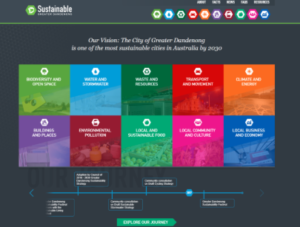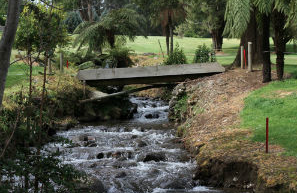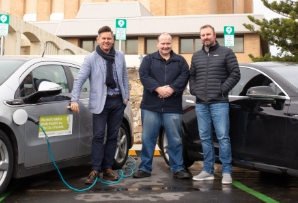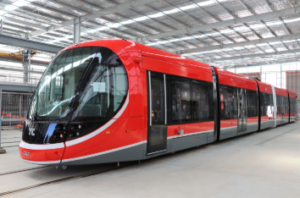“On the first day of Christmas, my Council gave to me, a plan to switch to clean energy” 🎵🎅
All across the country, Cities Power Partnership members have been wowing us with their commitment to clean energy. Throughout the year these councils have been putting their money where their mouth is and tackling climate change showing their commitment to a sustainable, non-polluting energy future. In honour of the festive season, we’ve singled out 12 of these awesome projects:
- Sustainable Greater Dandenong website

The City of Greater Dandenong aims to become one of the most sustainable cities in Australia by 2030. To reach this objective, Council established Sustainable Greater Dandenong, an innovative and world leading platform and supporting program, developed by Council in partnership with the community, which has empowered both Council Staff and the broader community to tackle sustainability issues. The Sustainable Greater Dandenong website allows the user to go directly to an area of interest, such as energy or waste, and find out how both Council and the broader municipality are tracking, as well as what Council is doing to address each issue.
- Warby Hydro

The historic Warburton mini hydro energy system was built in the 1930s to supply electricity to the local township in Victoria’s Yarra Valley. The scheme was decommissioned a few years later and abandoned once the grid network reached the township. Fast forward 80 years and the Warburton community has upgraded and refurbished the scheme, returning it to its former glory. A portion of the electricity created by the plant will be used to power the nearby golf course with the remainder sold into the grid.
- Electric Vehicle Charging Stations

In August 2018 Fremantle opened an electric vehicle charging station along the city’s “cappucino strip” giving residents and visitors a place to charge up. The four 22 kilowatt charging points are compatible with most electric vehicles, with a one-hour charge giving between 18-40 kilometres of driving distance depending on the car.
4. Solar Powered Water Treatment Plant
In mid 2017, Logan City Council announced that it would partner with Tesla to run a water treatment plant servicing up to 200,000 people powered by solar battery technology. Featuring 323 solar panels and a 95 kilowatt hour battery, the system will supply water 24 hours a day to residents of Flagstone, Yarrabilba, North Maclean, Spring Mountain and Woodhill.
5. Community-owned renewable energy retailer

Repower Byron Shire, launched in September 2017, is helping the Byron Shire community make a big impact on climate change. Enova Energy, along with Zero Emissions Byron and COREM have come together with Byron Shire Council to encourage people in the shire to achieve 100 per cent renewable energy use. The campaign will focus on three steps: using ethical suppliers who don’t use fossil fuels, cutting energy bills and reducing carbon footprints, and finally learning how to produce energy through the installation of solar PV. Currently Enova is working with a number of groups to reduce costs for these changes including interest free loans and bulk buying solar panels to help owners and landlords to get on board with the project.
- Floating Solar Farm

The Lismore floating solar farm in Lismore, northern NSW has embraced renewable energy and partnered with the Lismore City Council to develop Australia’s largest floating solar farm. Switched on last February, this innovative solar farm floats on the local sewage treatment works, powering part of the site’s operations. This project has been funded by the Lismore community and is operated by the council, under a unique community shareholder model where local investors loan funds to council.
- Melbourne Renewable Energy Project (MREP)
Melbourne Renewable Energy Project (MREP) marks the first time in Australia that a group of local governments, cultural institutions, universities and corporations have collectively purchased renewable energy from a newly built facility. MREP members, led by City of Melbourne and including Cities Power Partnership councils Port Phillip and Moreland, have committed to purchasing 88 GWh of electricity per year from the Crowlands Wind Farm in north western Victoria, under a long-term power purchase agreement. Because the wind farm will generate more than the purchasing group’s needs, it will also bring additional renewable energy into the market.
- Chargefox: EV charging and parking system in Adelaide
The City of Adelaide is ahead of the rest of the country when it comes to electric vehicle charging and parking with the rollout of a combination charging/parking system that allows users to find vacant car parks and charge their cars (any model) while parked. EV owners download the Chargefox app which allows them to locate a charging station or carpark when driving in the CBD. In addition, the City of Adelaide has offered a $5000 incentive scheme for car park owners to install a charging station, because they recognise the inevitable growth of EV sales in Australia, and the obvious advantages for the environment in encouraging their growth across South Australia and the rest of the country. Yay Adelaide!
- ACT Light Rail

The ACT has an aggressive Zero Emission Vehicle Action Plan to go along with their impressive target of 100% renewable electricity by 2020. The plan includes city-wide electric buses, a transition to EV’s for the fleet of government cars, and an initiative we haven’t seen a lot of coverage about but that is equally exciting: the Capital Light Rail system. The project commenced construction in 2016 and the first stage will be fully operational in 2019 (Gungahlin in the north to Canberra CBD). Given that the ACT will have contracted enough wind and solar power by 2020, the light rail trains (powered solely by electricity) will operate entirely free of greenhouse gas emissions. You can read more about the ACT’s impressive transport strategy, and transport in Australia in general in this Climate Council report.
- Moreland City Council
To meet transport challenges like population growth, climate change, peak oil, and traffic congestion Moreland City Council developed an Integrated Transport Strategy 2018 to support sustainable community efforts.The Sustainability section of this strategy document lists the following commendable action items: • Continue to purchase vehicles which minimise pollution and carbon emissions for Council’s fleet • Reallocate roadspace for greening and to address the urban heat island effect • Turn some Council off-street car parks into green community spaces • Advocate to the state government to transition public transport vehicles to renewable power sources • Support the private sector to rollout refuelling or charging points for hydrogen- or electric-powered vehicles • Trial e-bike charging points and parking facilities in key locations • Encourage zero-emissions vehicles such through dedicated parking in key locations
- Power Purchase Agreement for SSROC
In a NSW first, the Southern Sydney Region of Councils (SSROC) has signed a landmark agreement on behalf of 18 councils that will result in up to 35% of their retail electricity being supplied by a renewable energy generator from July 2019. This innovative approach, achieved through a renewable energy Power Purchase Agreement, allows councils to purchase renewable electricity without exposure to the volatility of the National Electricity Market. Out of the 18 SSROC councils, 13 are CPP members: Bayside, Caterbury-Bankstown, Georges River, Inner-West, Ku-Ring Gai, Lane Cove, North Sydney, Parramatta, Randwick, Ryde, Waverly, Willoughby and Woolhara.
- Solar Bulk Buy

To counter skyrocketing energy bills, Strathbogie Shire Council launched a bulk buy program to bring solar power to the people. Bogie Bulk Buy, as it’s known locally, combines independent solar energy information with bulk cost, quality-vetted solar systems, specially designed for a rural farming community. In its first two months, Bogie Bulk Buy topped 150kW of solar power purchased by residents, preventing 7100 tonnes of greenhouse gas being released into the atmosphere and saving $67,000 in household energy costs.


